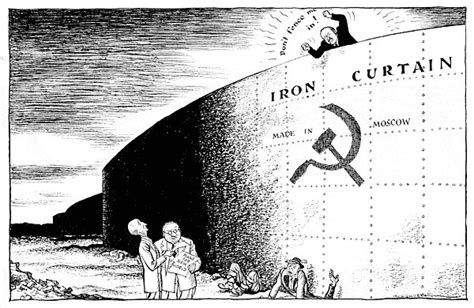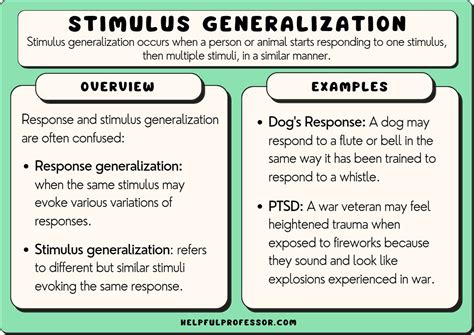The Iron Curtain

The Iron Curtain, a term coined by Winston Churchill in 1946, refers to the physical and ideological barrier that divided Europe during the Cold War. The curtain, which was both literal and metaphorical, separated the Eastern Bloc, comprising Soviet-dominated socialist states, from Western Europe and the North Atlantic, which was dominated by the United States and its allies. The Iron Curtain was a powerful symbol of the division between the communist and capitalist worlds, and its legacy continues to shape international relations and global politics to this day.
The concept of the Iron Curtain was first introduced by Churchill in a speech delivered at Westminster College in Fulton, Missouri, where he described the Soviet Union's efforts to impose its dominance over Eastern Europe. Churchill's speech marked a significant turning point in the early Cold War, as it highlighted the growing tensions between the Soviet Union and the Western powers. The term "Iron Curtain" was initially used to describe the physical barriers, such as border fences and walls, that the Soviet Union had erected to prevent its citizens from fleeing to the West. However, over time, the term took on a broader meaning, encompassing the ideological, cultural, and economic divisions between the Eastern and Western blocs.
Key Points
- The Iron Curtain was a physical and ideological barrier that divided Europe during the Cold War.
- The term was coined by Winston Churchill in 1946 to describe the Soviet Union's efforts to impose its dominance over Eastern Europe.
- The Iron Curtain was characterized by physical barriers, such as border fences and walls, as well as ideological and cultural divisions.
- The curtain played a significant role in shaping international relations and global politics during the Cold War.
- The legacy of the Iron Curtain continues to influence contemporary international relations and global politics.
The Historical Context of the Iron Curtain

The Iron Curtain was a product of the post-World War II settlement, which saw the Soviet Union emerge as a dominant power in Eastern Europe. The Yalta Conference in 1945, where the Allied leaders met to discuss the post-war reorganization of Europe, marked a significant turning point in the lead-up to the Iron Curtain. The conference saw the Soviet Union, the United States, and the United Kingdom agree to divide Europe into spheres of influence, with the Soviet Union gaining control over Eastern Europe. The subsequent Potsdam Conference in 1945 further solidified the division of Europe, as the Allied powers failed to reach an agreement on the post-war reorganization of Germany.
The Soviet Union's imposition of communist regimes in Eastern Europe, combined with the establishment of the Eastern European socialist bloc, created a physical and ideological barrier between the East and the West. The Berlin Blockade in 1948, where the Soviet Union blocked Western powers' access to Berlin, marked a significant escalation of tensions between the two blocs. The subsequent establishment of the North Atlantic Treaty Organization (NATO) in 1949 and the Warsaw Pact in 1955 further entrenched the divisions between the Eastern and Western blocs.
The Physical Barriers of the Iron Curtain
The physical barriers of the Iron Curtain were characterized by a series of fences, walls, and fortifications that separated the Eastern Bloc from Western Europe. The most famous of these barriers was the Berlin Wall, which was erected in 1961 to separate East and West Berlin. The wall, which was guarded by armed soldiers and watchtowers, became a powerful symbol of the division between the East and the West. Other physical barriers, such as the Inner German Border and the Czechoslovakian border, were equally formidable, with guard towers, minefields, and raked gravel or “death strips” designed to prevent escape attempts.
| Country | Border Length | Physical Barriers |
|---|---|---|
| East Germany | 1,381 km | Wall, fence, watchtowers, minefields |
| Czechoslovakia | 957 km | Fence, watchtowers, minefields |
| Poland | 1,215 km | Fence, watchtowers, minefields |

The Ideological Divisions of the Iron Curtain

The ideological divisions of the Iron Curtain were characterized by a fundamental disagreement between the communist and capitalist systems. The Soviet Union and its Eastern European allies saw the West as a threat to their socialist ideology, while the Western powers viewed the Soviet Union as a threat to their democratic values and way of life. The ideological divisions were further exacerbated by the Cold War propaganda machinery, which portrayed the opposing side as evil and aggressive.
The Soviet Union's imposition of communist regimes in Eastern Europe, combined with the establishment of the Eastern European socialist bloc, created a cultural and ideological barrier between the East and the West. The suppression of dissent and the restriction of individual freedoms in the Eastern Bloc further entrenched the divisions between the two blocs. The Western powers, on the other hand, promoted democratic values and individual freedoms, which were seen as a threat to the stability of the communist regimes.
The Cultural Divisions of the Iron Curtain
The cultural divisions of the Iron Curtain were characterized by a fundamental disagreement between the socialist and capitalist systems. The Soviet Union and its Eastern European allies promoted a socialist culture, which emphasized the collective over the individual, while the Western powers promoted a capitalist culture, which emphasized individual freedom and entrepreneurship. The cultural divisions were further exacerbated by the restriction of travel and communication between the East and the West, which limited the exchange of ideas and cultural practices.
The Iron Curtain had a profound impact on the cultural landscape of Europe, as it limited the exchange of ideas and cultural practices between the East and the West. The Soviet Union's promotion of socialist realism, which emphasized the depiction of socialist ideals in art and literature, further entrenched the cultural divisions between the two blocs. The Western powers, on the other hand, promoted a diverse range of cultural practices, which were seen as a threat to the stability of the communist regimes.
What was the significance of the Iron Curtain in the Cold War?
+The Iron Curtain was a physical and ideological barrier that divided Europe during the Cold War, symbolizing the division between the communist and capitalist worlds. It played a significant role in shaping international relations and global politics during the Cold War.
What were the physical barriers of the Iron Curtain?
+The physical barriers of the Iron Curtain included fences, walls, and fortifications that separated the Eastern Bloc from Western Europe, such as the Berlin Wall and the Inner German Border.
What were the ideological divisions of the Iron Curtain?
+The ideological divisions of the Iron Curtain were characterized by a fundamental disagreement between the communist and capitalist systems, with the Soviet Union and its Eastern European allies promoting socialism and the Western powers promoting democracy and individual freedoms.
Meta Description: The Iron Curtain was a physical and ideological barrier that divided Europe during the Cold War, symbolizing the division between the communist and capitalist worlds. Learn more about its significance, physical barriers, and ideological divisions. (147 characters)



